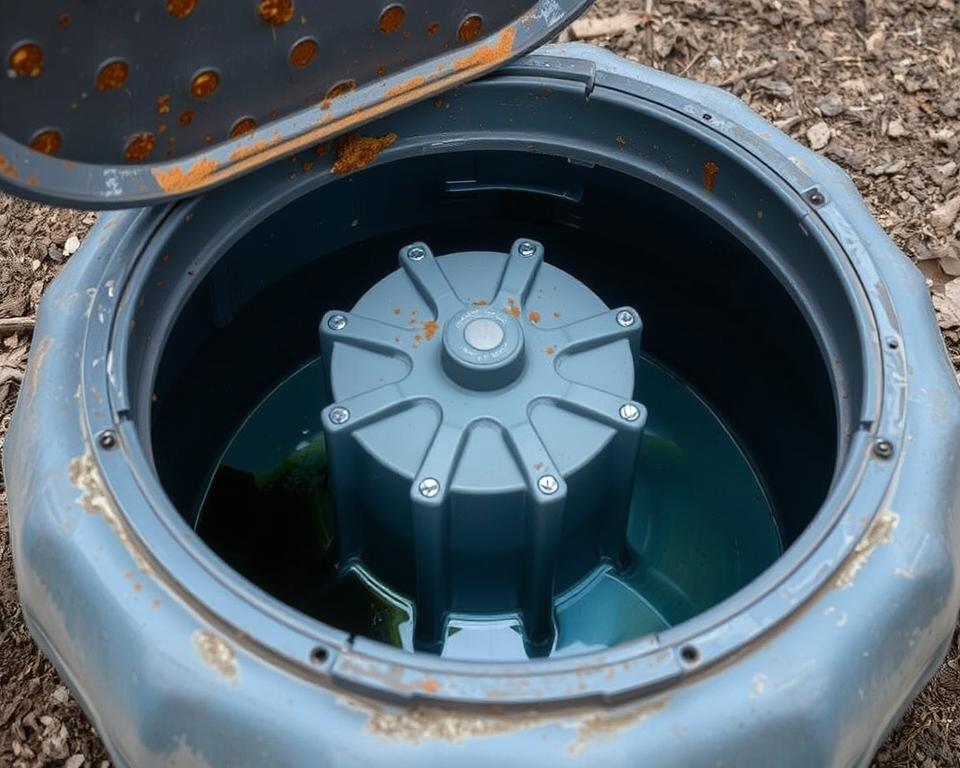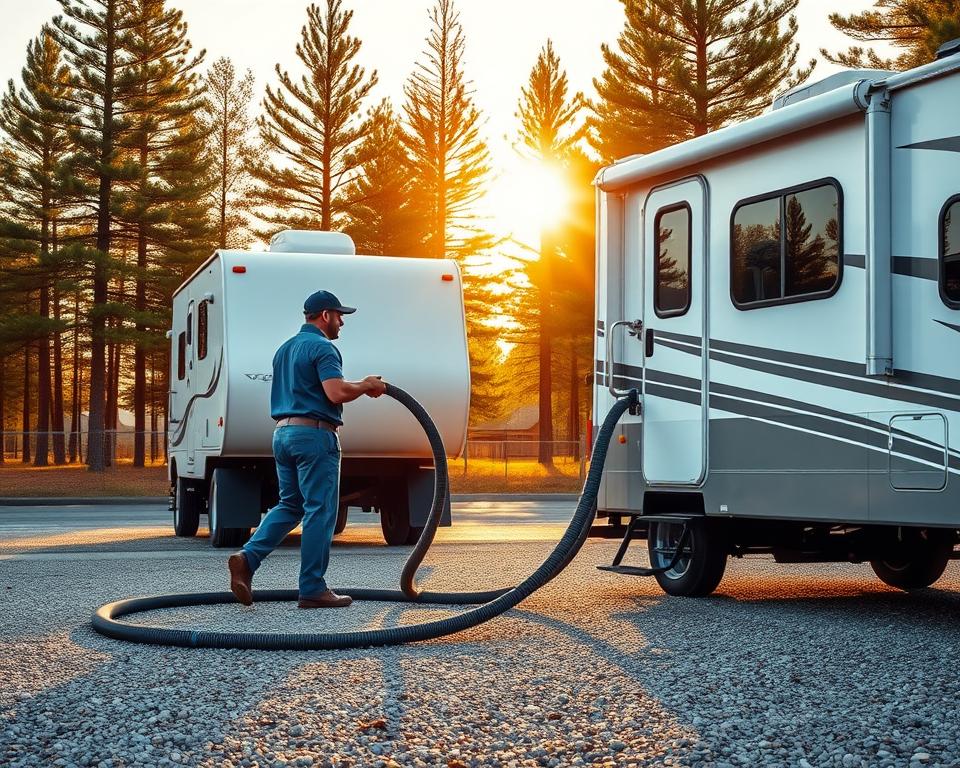Understanding Septic Tank Pumping Costs Near Me in Northridge
Septic Tank Pumping Price Breakdown
Have you paused to consider about the true price of up‑keeping your septic system in good order, or whether you’re paying excessively? It’s vital for homeowners to understand the particulars of septic tank pumping prices. Typically, the cost sits near $420, yet it can fluctuate widely. This difference stems from elements like your tank’s capacity and geographic area – septic cleaning near me.
Regular servicing of your septic tank avoids hefty remedies, highlighting the necessity of understanding service costs. This article will examine septic tank service pricing in depth. This will help you plan cost‑effectively for your system’s maintenance.
Essential Insights
- Average septic tank pumping runs about $420.
- Prices can fall between $290 USD and $560 subject to various factors.
- Regular upkeep prevents more expensive repairs down the line.
- Most households call for pumping every three to five years.
- Number of occupants and consumption can influence pumping schedule.
Understanding the Significance of Septic Tank Pumping
Septic tank pumping is crucial for a smooth‑running effluent system. It gets rid of solids that, if left unchecked, cause blockages. Timely pumping doesn’t just avoids bad smells but also fends off high repair costs.
Overlooking septic tank maintenance can jeopardize our extensive reliance on these systems. Fortunately, cost‑effective services reduce the risk of system failure. Regular upkeep lengthens your septic system’s life, ensuring smooth operation.
Cost data for septic tank upkeep reveals the value of forward‑thinking care. Maintenance detects problems before they escalate, avoiding major damage and steep repair bills. Regular pumping is a prudent move for homeowners to safeguard their investment and gain peace of mind.
Standard Fees for Septic Tank Pumping
Septic tank pumping typically comes between $250 USD and $600 in cost. Most times, homeowners will spend about $400 USD for this critical service. Price variations are due to elements like tank size, geographic setting, and how often maintenance is performed. Standard tanks, around a thousand gallons, usually cost between $225 and $400.
Homeowners should remember the importance of setting aside funds every three to five years for septic tank pumping. This scheduled care depends on the usage level and size. It prevents more serious, pricier issues in the long run, showing to be both labor and budget friendly.

Elements Shaping Septic Tank Pumping Prices
Multiple considerations are key in setting the price of septic tank pumping. Knowing these details helps homeowners to allocate funds for these essential services effectively.
The volume is significant immensely. Bigger tanks take more effort and resources to empty, which results in higher fees. The reachability to your tank also noticeably impacts the price. Tanks buried deep or in hard‑to‑reach locations demand more time and extra gear from technicians, thus boosting the labor costs.
Costs can vary widely according to where you live. This is due to shifts in local labor rates and dumping charges. For example, some areas carry higher charges for disposing of waste, impacting the overall service cost. Moreover, tanks with significant solid waste accumulation also incur additional fees—anywhere from $100 USD to $300 USD. Plus, the more frequently a tank requires pumping—due to higher household wastewater production—the higher the ongoing expenses.
Septic Tank Capacity and Its Influence on Cost
The size of your septic tank clearly impacts the cost of its upkeep. Compact tanks, such as, those that can hold 750 gallons, generally have lower pumping costs, generally ranging from $175 USD to $300 USD. On the other hand, higher‑capacity tanks, capable of holding up to one thousand seven hundred fifty gallons, may incur charges between $400 and $700. The majority of single‑family residences feature tanks that hold between one thousand to 1,250 gallons, providing a balance between capacity and function.
Households with smaller tanks or large households often require more frequent pumping services, which raises the overall expense. It’s crucial to conduct regular septic tank inspections in these situations. This guarantees the tank does not overflow or fail, which helps avoid additional damages. By recognizing the connection between tank size and service fees, homeowners can take smart choices regarding their septic systems and their upkeep requirements.
Location‑Based Changes in Septic Tank Pumping Costs
Septic tank pumping costs can differ dramatically based on location. In urban areas, the expenses are frequently higher due to local septic services experiencing increased overhead. For example, Minneapolis, MN residents may spend between $180 and $280, while those in Portland, OR could see prices from $440 to $750.
The reasons behind these disparities are varied. They include regional expenses, need for septic specialists, and area‑specific regulations. In places where septic services are scarce, homeowners might pay more due to the lack of options. Moreover, stringent regulations in some regions can raise the need for higher compliance fees, influencing the cost of services.
Knowing about these geographic cost variances is crucial for homeowners. It enables them to plan their septic maintenance spending more precisely. By understanding local pricing, they can get quotes from specialists smartly, maintaining their septic system effectively without overspending.
Supplementary Fees to Consider with Septic Tank Pumping
Homeowners often forget about various additional maintenance costs linked to septic tank pumping. The core cost includes just the essential service, not covering other potential expenses. Knowing these can aid in creating a complete budget.
Camera inspections, for instance, range between $250 to $500. They offer a minimally disruptive look into the system’s condition. Additionally, cleaning filters, which if ignored can lead to system failures, represents another cost.
The spread for repairs can be broad, from $100 to $4,000 USD, depending on the specific issues. This variability highlights the need of factoring in additional maintenance costs for future budgeting.
Allocating Funds for Septic Tank Maintenance
When budgeting for septic tank upkeep, it’s critical to take a all‑inclusive view. This covers a few critical elements. Owing to variable factors, the cost of maintenance can vary considerably. Therefore, smart financial planning is key.
To make sure your system runs reliably and to avoid unforeseen bills, keep these intervals and services in mind:
- Routine pumping: This service is typically required every 3 to 5 years.
- Inspections: Budget for around $250 to $1,180 for inspections every three years.
- Potential repairs: Maintain a fund for surprise repairs, which can occur unexpectedly.
Establishing a recurring maintenance calendar with a reliable septic service is key. By anticipating these expenses, homeowners can sidestep the large costs tied to neglect. This method guarantees the longevity and efficiency of their septic systems.
Early Warnings That Your Septic Tank Needs Pumping
Keeping watch to your septic system’s condition is vital. Recognize the first clues that suggest your septic tank requires pumping. Doing so can avoid major damage and reduce repair costs.
- Slow drains: Water with sluggish flow in sinks, tubs, or toilets could signal your septic tank is overflowing.
- Unpleasant odors: Bad smells around the septic tank or in your yard are frequently clear indicators of a problem.
- Gurgling sounds: Unusual gurgling from your plumbing might suggest air is trapped because of a blockage.
- Wet spots: Standing water or lush grass patches near the drain field signal waste seepage from the tank.
- Dark green grass: Grass that is deeper green and seems healthier around the drain field may show leakage of nutrients, suggesting an issue.
Regular checks by septic system experts can maintain your tank is in healthy condition. Using seasoned septic technicians for maintenance prevents these issues, guaranteeing your system’s longevity.
Benefits of Consistent Septic Tank Inspections
Frequent inspections are central to maintaining your septic system in prime shape. They identify potential problems before they become costly repairs. By engaging professionals for these checks, every part of your system gets a thorough assessment.
The inspection reviews multiple parts of your system, including waste levels and the drain field’s state. It confirms that critical parts, like baffles, function as they should. Catching issues sooner avoids dangerous overflows and shields the environment, helping both your home and the wider community.
Getting your septic tank checked every three years can cut a lot of money. It stops bigger issues from developing due to neglect. This not only cuts on repair costs but also gives your peace of mind.
| Inspection Aspect | Importance |
|---|---|
| Waste Level Assessment | Prevents overflow and backups |
| Drain Field Evaluation | Identifies saturation and function |
| Component Functionality Check | Ensures proper system operation |
| Early Problem Detection | Saves on repair costs |
Ways to Cut Costs on Septic Tank Pumping Prices
Homeowners trying to reduce septic tank pumping costs have several strategic options. Setting up group services with neighbors is one efficient method. This involves teaming up with others nearby to request services as a group, potentially securing group discounts. It’s a way to build community bonds while controlling expenses more effectively.
Another helpful approach is to enroll in maintenance plans with septic service providers. These plans often include lower fees for scheduled check‑ups and pumpings, ensuring septic systems working properly at a lower cost. Homeowners are encouraged to ask about these plans when contacting service companies.
Making the septic tank easy to reach can also lower pumping expenses. Simple accessibility means there’s no need for extra labor charges. It’s important to keep the area around the tank unblocked, making way for straightforward servicing.
Adopting certain habits helps in prolonging the time between pumpings as well. Cutting back on water usage and curbing garbage disposal use are important practices. These actions can significantly enhance septic system health, reducing the need for regular maintenance. By following these habits, homeowners can successfully reduce their septic tank pumping costs, preserving their finances and systems.
Final Remarks
Guaranteeing consistent septic tank pumping is essential for homeowners who want to keep their waste management system efficient and in top shape. Being informed about the costs involved enables smart budgeting. This way, you can get cost‑effective septic services without hurting your system’s functionality.
Adopting a preventive approach to maintenance is extremely beneficial. By looking out for indicators that show the need for pumping, you can sidestep hefty repairs and extend your system’s lifespan. Such actions not only improve your home’s functionality but also deliver you peace of mind.
To wrap up, staying on top of regular inspections and timely septic tank pumping is critical for sound home maintenance. By giving importance to proper planning and choosing affordable septic service, you’ll secure your septic system remains working and efficient for many years.

